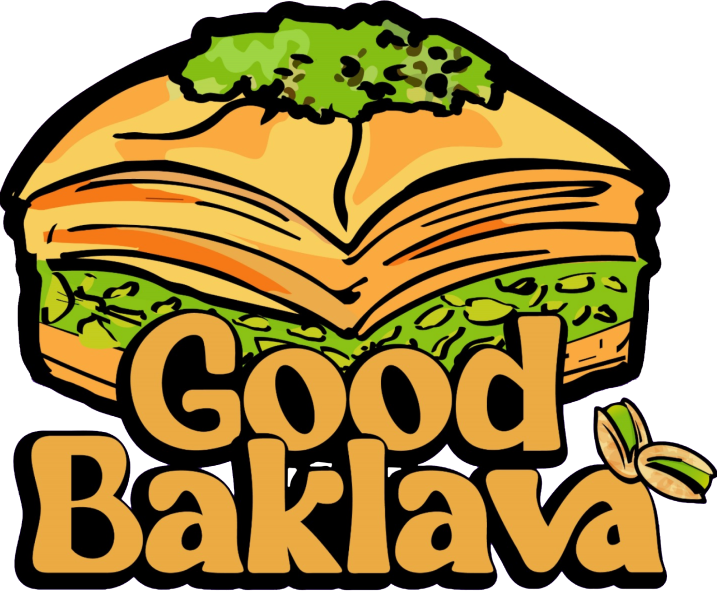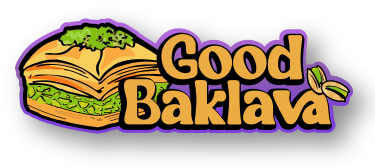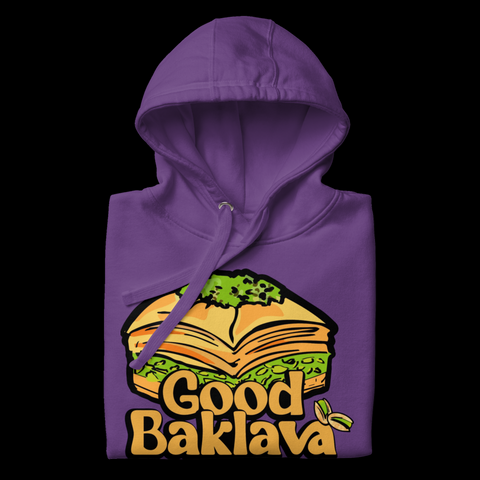
Baklava is a delicious, sweet pastry made from layers of flaky pastry filled with nuts and drizzled with syrup. A desert that is simple in concept, but difficult to make. Everyone knows that the best deserts are cultural. And this one just might be one of the most cultural pastries ever.
What is Baklava all about any ways?

Baklava has its origins in the Turkish region, and is still a staple of Turkish cuisine today. There are many different types of baklava that you can find, including traditional baklava with pistachios, or baklava made with walnuts, peanuts, cashews and more.. In addition to the variations in ingredients, baklava is also made with different styles of pastry, from thin baklava sheets to thicker baklava with a doughy crust. Making baklava is an art, and it takes a lot of skill to get the perfect layers, filling, and syrup and it can be a time-consuming and difficult process. The skills can be compared to an advanced sushi chefs and this Turkish delicacy is considered a luxury desert.
Despite the complexity of baklava making, it remains one of the most popular desserts around the world. This may be due to baklava's rich and complex flavors, or its cultural roots that are tied to Turkey and other countries in the Middle East. However you can find high quality and properly made baklava right here in the USA.
Before we get our hands sticky, let's take a deeper dive into the history!
The roots of Baklava
Baklava can be traced back to the Ottoman Empire. The technique of baklava making was said to have been brought to the Ottoman kitchen by chefs who worked in the palace of Topkapi Saray, where baklava was enjoyed as a breakfast food and considered a luxury goods. The rich history ties to its rich taste and the special desert goes as far back to the ancient bakers who were respected in the kingdom and baklava was made for the king's family. The coolest part about authentic baklava is that when you find a good source, the baklava you eat today is similar to the baklava you'll eat in the 1400s of the Ottoman Empire.
So what makes baklava so special?

Baklava is a truly unique desert that has its origins in the Middle East and is still heavily enjoyed today. It's widely considered to be one of the most delicious pastries you can find, with its complex flavors, layers of flaky pastry, and sweet and sticky syrup. It is honestly a gastronomical super concept with a diverse flavor profile and an insane texture. Imagine something that tastes crunchy and moist at the same time while being sweet and earthy. Crunchy and moist usually wouldn't make sense, but a traditional piece of Baklava has over 40 layers of 'see through' thin phlyo dough! Thats a lot of layers! Each layer of dough is fully coated in clarified butter. Once baked, hot syrup is poured on the pan and the bottom becomes sticky and moist while the top becomes perfectly crisp and glossy. It's kinda 'nuts'.
Good Baklava vs Bad Baklava

If you search 'Baklava Recipe' on Google, you'll find a thousand different recipes. I haven't searched them all, but I can confirm the ones that I have searched have been bullshit. The truth is, not all baklava is created equally and there is such a thing as 'bad baklava'. Baklava should never be dry, unless it is a special type that comes from Syria. Baklava should never look 'gross' as it is a sexy desert and presentation comes with pride.
The ingredients
A big part, if not the most important part of making a great tray of baklava is simple, it all starts with the ingredients. Store bought phyllo dough is usually very old and packed with bunk preservatives to keep it from spoiling. This ingredient is an equal important part to the dish and can be considered the base. Frozen phyllo can last up to 1.5 years! While baklava has a great shelf life, 1.5 years is to just too much.

Surprisingly, fresh phyllo is not too hard to make. The components include just flour, water and oil. The hard part on the other hand, is getting it paper thin. Many baklava chefs has specific methods and machines to do so outside the traditional rolling pin.
The nuts

Baklava is a world of its own. While baklava can be made with pistachios, walnuts, almonds or cashews (to name a few), baklava always includes a nut that brings both saltiness and sweetness together, creating that authentic baklava flavor. I have found that pistachio and walnut is typically the most common types, but my favorite is definitely pistachio. Taste the green and purple mannnnn, it's like the earth!
Like phyllo dough, pistachios are also not created equally. I find that California and New Mexican pistachios are overly salted to compensate for the dryness and lack of flavor. The best pistachios, world wide are known to be in Gaziantep, Turkey! It's always a toss up on where baklava 'actually' comes from but thanks to the perfect climate and rich growing soil, Turkey takes the cake for the best baklava. Really, anyone can make phyllo dough and get it thin.
The magic is in the nuts!
The oven
A wood fired oven is commonly used to bake baklava and it takes skill and experience to know how to keep the oven at a certain temp. Letting the oven go too cold or allowing it to get to hot is an obstacle to navigate while baking baklava. Think of a race car and its driver.
The syrup
This part is probably the easiest to make, and any one can do it! The component's include just sugar, water, and lemon juice! It is held hot then poured on top of the baklava once it is finished baking!






